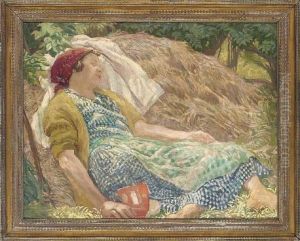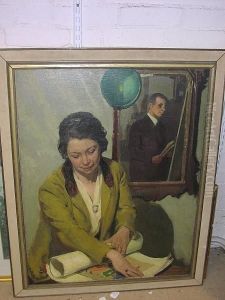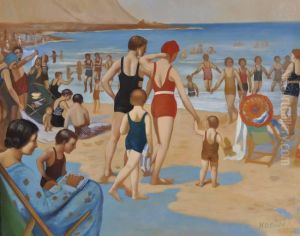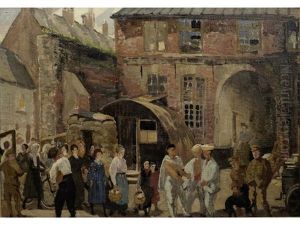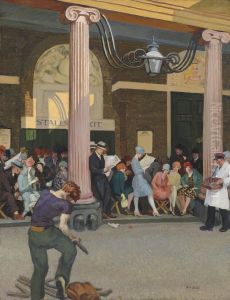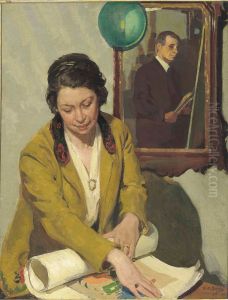Herbert Ashwin Budd Paintings
Herbert Ashwin Budd was a British artist known for his contributions to early 20th-century British art, particularly in the realms of painting and illustration. Born in 1881, Budd emerged from a period of British art that was characterized by its transition from the Victorian to the modern, navigating through the influences of Impressionism, Realism, and the burgeoning Modernist movements. His career spanned a time of great change, both in the art world and in society at large, with the impacts of both World Wars influencing artistic expression and themes.
Budd's education and early career were marked by traditional training, which was then a blend of rigorous academic studies and the beginning of more experimental approaches to art. He attended prestigious institutions where he honed his skills in drawing, painting, and illustration. Budd was adept in both oil and watercolor mediums, allowing him a versatility that was well suited to the varied demands of his time, including book illustration, portrait painting, and landscape works. His illustrations often appeared in popular magazines and books of the day, reflecting a keen eye for detail and a sensitivity to narrative that made his work widely appealing.
Throughout his career, Herbert Ashwin Budd exhibited a keen interest in capturing the essence of English life and landscapes, often portraying scenes of the countryside that echoed a nostalgic view of Britain. Despite the tumultuous times he lived through, Budd's work retained a certain tranquility and often eschewed the more radical stylistic changes of his contemporaries. Instead, he developed a style that, while influenced by the movements of his time, remained distinctively his own, characterized by a gentle realism and a warm, nuanced use of color.
Budd's contributions to British art were recognized in his lifetime, and he was involved in various exhibitions, both solo and group, that helped to cement his reputation. After his death in 1950, Herbert Ashwin Budd's work continued to be appreciated by collectors and historians who valued his unique perspective on the British landscape and society. His legacy is that of an artist who skillfully bridged the gap between the traditional and the modern, capturing the spirit of his age with both fidelity and affection.
